James the lesser was the son of Alphaeus and Mary of Clopas (Maria Jacobi in Latin) and the brother of Jude Thaddeus. James the lesser was also called “the minor” and “the little,” to distinguish him from James the greater, who was the son of Zebedee.
James the lesser came from Nazareth and was related to Jesus (maybe His cousin) and often called “brother of the Lord.” He was also called “James the Just.” He was known for drinking no wine or strong drink, he did not eat animal food, he never shaved, and did not anoint himself or take baths.
.
James the lesser
1st bishop of Jerusalem
Soon after Jesus’ ascension, the apostles unanimously elected James the Just as first bishop of Jerusalem. Perfect in all the virtues of action and contemplation, James alone entered the Holy of Holies of the New Testament, not once a year, like the High Priest of the Jews, but on a daily basis, in order to celebrate the holy sacraments. Dressed in a linen garment he would enter the Temple and kneel for hours praying for all the people and for the salvation of the world, to such an extent that his knees became hard as stone.
.
Jerusalem in the time of Jesus Christ
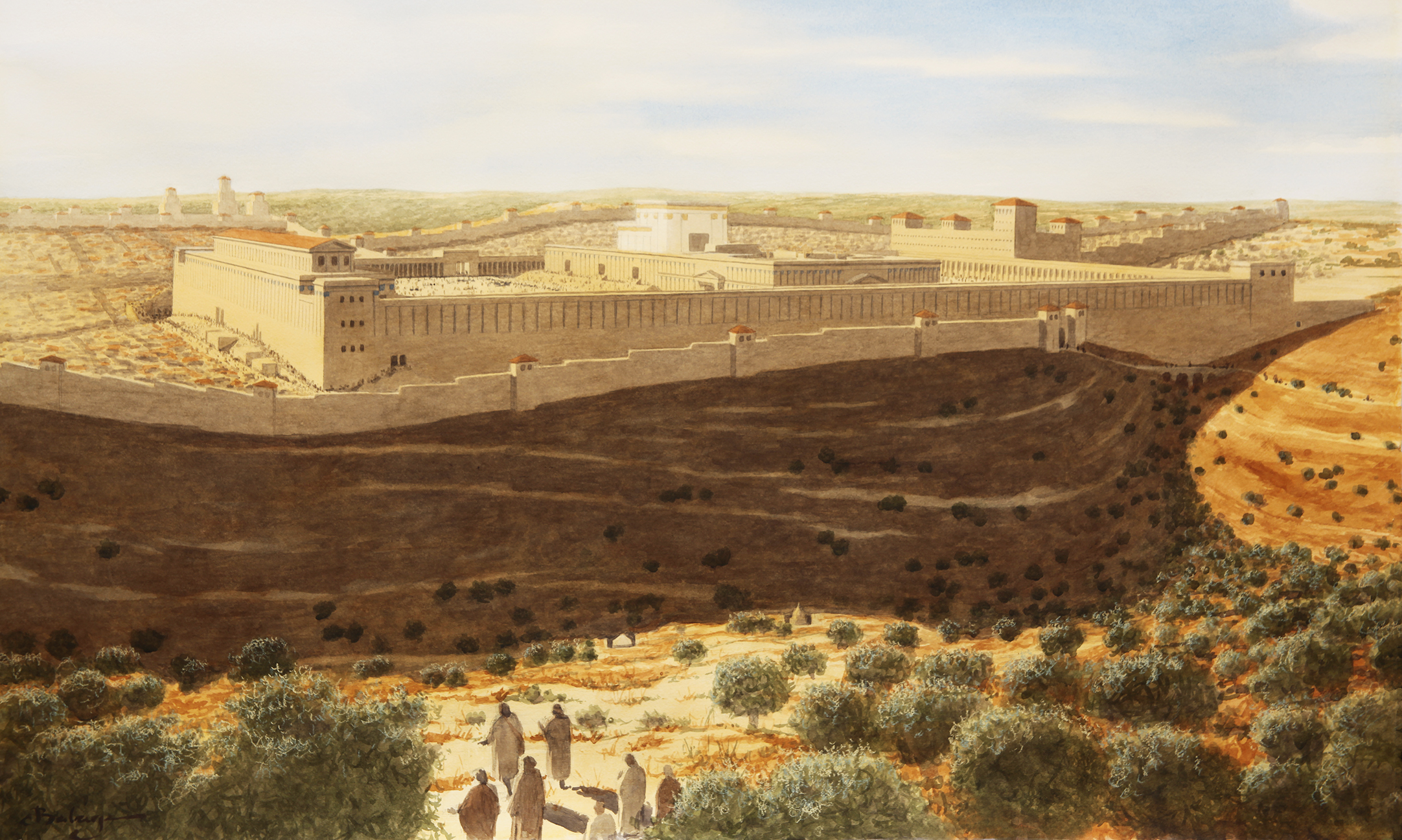 The Temple Mount Jerusalem from the Mount of Olives, 1st Century AD, by Balage Balogh. NOTE: Balage based his illustration on a photo taken from the Mount of Olives. He did extensive research on the architecture of the Second Temple and Herod the Great’s construction projects in Jerusalem. He consulted scholarly literature on the archaeology of Jerusalem in the 1st century AD and superimposed this information onto the photo which he copied to the work surface to maintain accuracy of detail. http://www.archaeologyillustrated.com/
The Temple Mount Jerusalem from the Mount of Olives, 1st Century AD, by Balage Balogh. NOTE: Balage based his illustration on a photo taken from the Mount of Olives. He did extensive research on the architecture of the Second Temple and Herod the Great’s construction projects in Jerusalem. He consulted scholarly literature on the archaeology of Jerusalem in the 1st century AD and superimposed this information onto the photo which he copied to the work surface to maintain accuracy of detail. http://www.archaeologyillustrated.com/
.
Council of Jerusalem 50 AD
James the lesser became an important part of the Church’s growth in Jerusalem. As Bishop, James the lesser called the Council of Jerusalem or Christian Apostolic Age council about the year 50. Peter and Paul attended. The purpose was to decide if circumcision for gentile converts was required for community membership since some beleived: “Unless you are circumcised according to the custom of Moses, you cannot be saved.” Demanding a Gentile adult male be circumcised in order to become a follower of Jesus may not only have been terrifying, but it may have been life-threatening. James concluded that Paul would not have to demand his men to become circumcised to remain in the group. James the lesser said “It is my judgment, therefore, that we should not make it difficult for the Gentiles who are turning to God.” (Acts 15:19)
James was bishop of Jerusalem for twenty-nine years, governing a church in perpetual dangers from the fury of people and violent persecutions. During this time, the church must have become more organized. James left behind a summary of his teaching. He made the arrangements for church ministers to perform healing services and he supervised the evolution of divine worship in Jerusalem, where his Liturgy is still celebrated regularly.
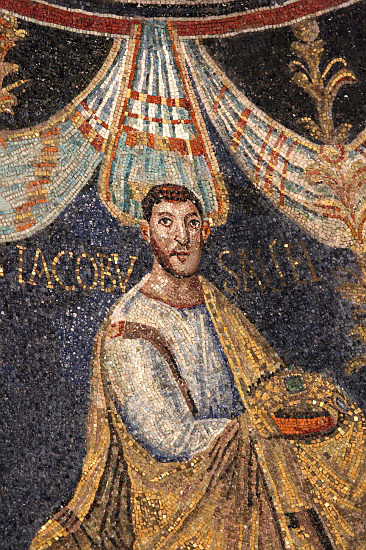 St. James the Lesser mosaic, c. 451-75, Orthodox Baptistery, Ravenna, Italy,
St. James the Lesser mosaic, c. 451-75, Orthodox Baptistery, Ravenna, Italy,
by CHRIST BEARERS (2012) at https://christbearers.wordpress.com/2012/05/03/also-the-feast-of-st-james-the-son-of-alpheus-apostle-martyr-no-less/
.
James the lesser’s Martyrdom
In 63 AD Ananus ben Ananus, a Sadducee, was appointed high priest of Israel in Jerusalem. Ananus decided to pressure James to deny that Jesus is the Messiah and the Son of God. He ordered James the lesser to stand on the Temple wall and speak against Jesus to the crowds which had gathered in preparation for the Passover. James instead spoke in favor of Jesus as the Christ; many heard him and many were converted. So the Jewish religious leaders threw James down from the Temple wall. Yet he did not die from the fall, so they began to stone him. Still he did not die from the stoning, so a man took a club and clubbed him to death.
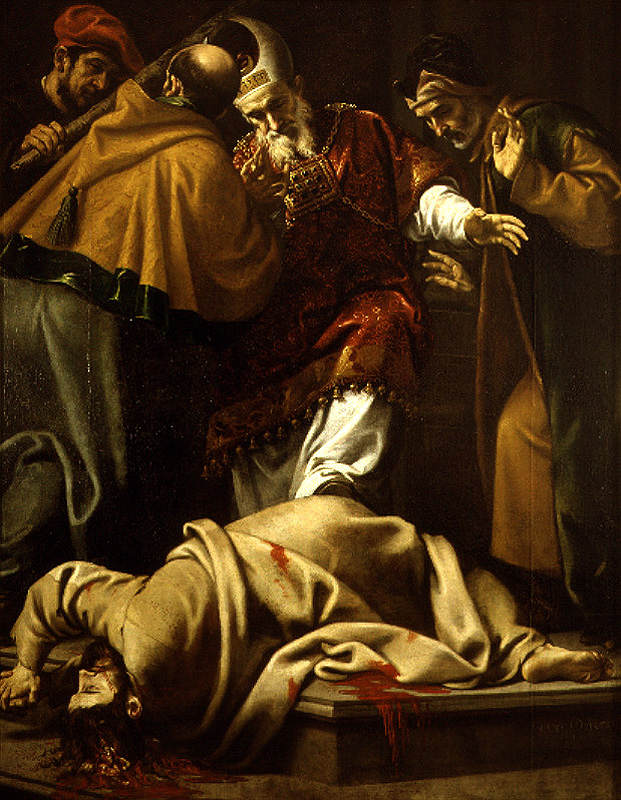 Martyrdom of Saint James the less by Pedro Orrente, c. 1639,
Martyrdom of Saint James the less by Pedro Orrente, c. 1639,
Museum of Fine Arts Valencia, Spain
.
Remains of Saint James the lesser
in Jerusalem and Rome
Inside a walled compound in the ancient Armenian Quarter of Jerusalem’s Old City is the Church of Saint James. Armenia was the first nation to adopt Christianity as its state religion (301 AD), and Armenian Christians established the first “quarter” in Jerusalem. According to Armenian tradition, within the church are buried the head of Saint James the greater (the rest of his body is believed to be in the Spainsh pilgrimage shrine of Santiago de Compostela) and the body of Saint James the lesser.
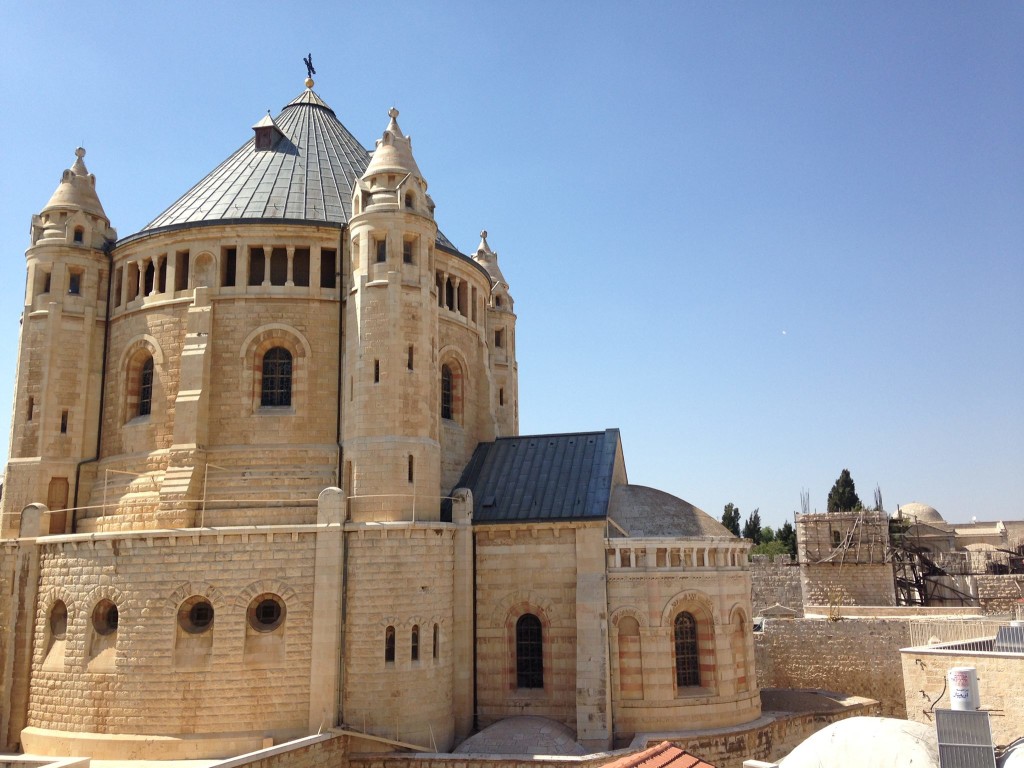 Church of Saint James with the skull of James the greater and the body of James the lesser
Church of Saint James with the skull of James the greater and the body of James the lesser
is the cathedral of the Armenian Orthodox Patriarchate of Jerusalem. Photo by VEGAN WORLD TREKKER—VEGAN TRAVEL: http://www.veganworldtrekker.com/vegan-travel-the-sights-and-vegan-food-in-old-jerusalem-and-tel-aviv/.
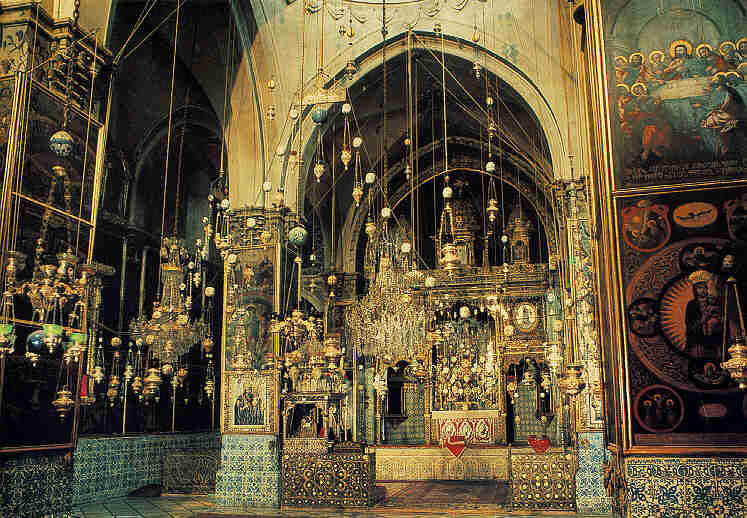 Church of Saint James is one of the most ornately decorated places of worship in the Holy Land. The remains of James the lesser are under the main altar. Photo by REALITY + RETROSPECT: http://www.realityandretrospect.com/blog/10-favorite-things-to-do-jerusalem-pt-2-of-2
Church of Saint James is one of the most ornately decorated places of worship in the Holy Land. The remains of James the lesser are under the main altar. Photo by REALITY + RETROSPECT: http://www.realityandretrospect.com/blog/10-favorite-things-to-do-jerusalem-pt-2-of-2
.
Some relics of James the lesser are also kept at Dodici Apostoli church (The Church of the Twelve Holy Apostles) in Rome.
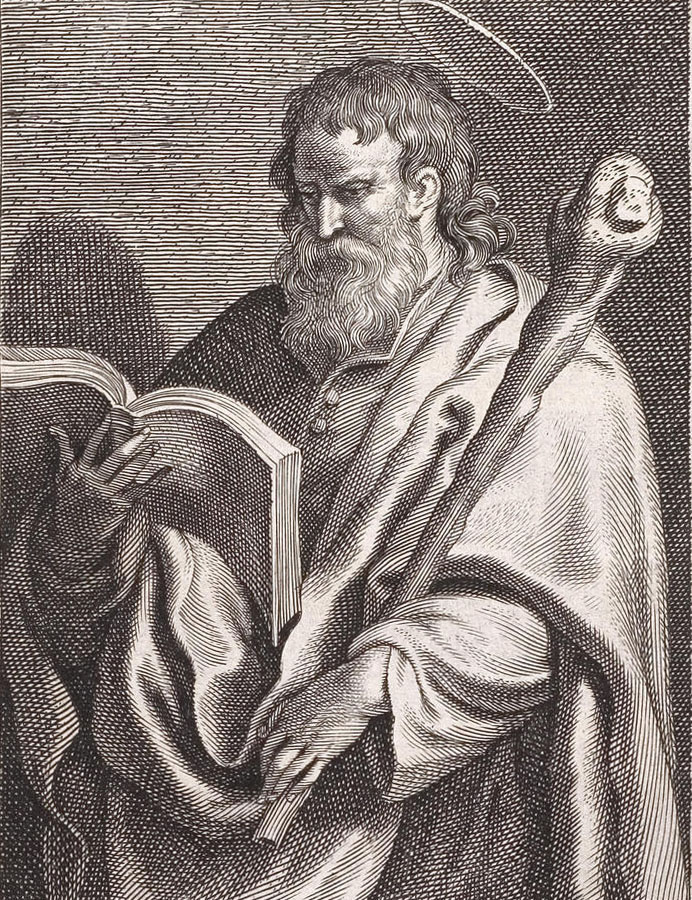 Saint James the Lesser engraving by Schelte a Bolswert (17th century) after Gerard Seghers http://commons.wikimedia.org/wiki/File:Arolsen_Klebeband_13_015.jpg
Saint James the Lesser engraving by Schelte a Bolswert (17th century) after Gerard Seghers http://commons.wikimedia.org/wiki/File:Arolsen_Klebeband_13_015.jpg
.
Saint James the lesser’s feast day is May 3, the same feast day as the Apostle Philip.

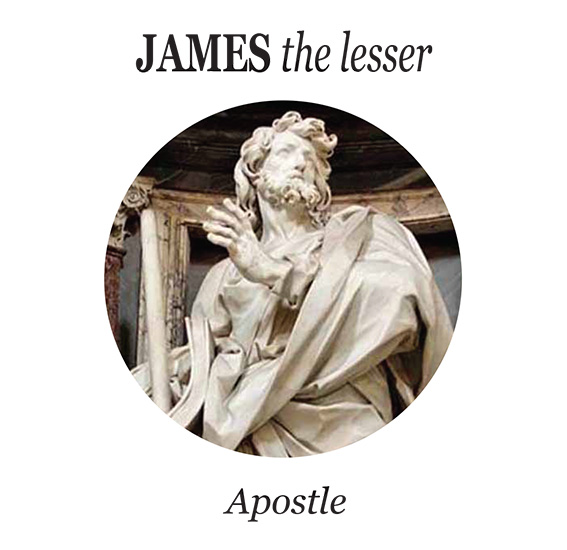

Very interesting. We are studying the apostles in Sunday School, one each Sunday…and I am doing computer research. Thank you so much for this site. Maggie
In 1960 I was confirmed James, in honor of James the Less. Truly I did not understand or fully appreciate the significance of this saint and apostle who is also called “brother of the Lord”. I sought mainly to honor the Sacrament, and chose (as I thought then) the more humble name than James Zebedee (son of thunder). Well, the Lord is truly Good, and I now can see how my choice of James has influenced my life. I am truly blest.
Randal Stewart James Williams
Interesting piece of work. I’m a Catholic and very interested in knowing and understanding about my faith especially the leaders who were there before us. I’m eager to imitate them. Thanks for sharing with us this knowledge.